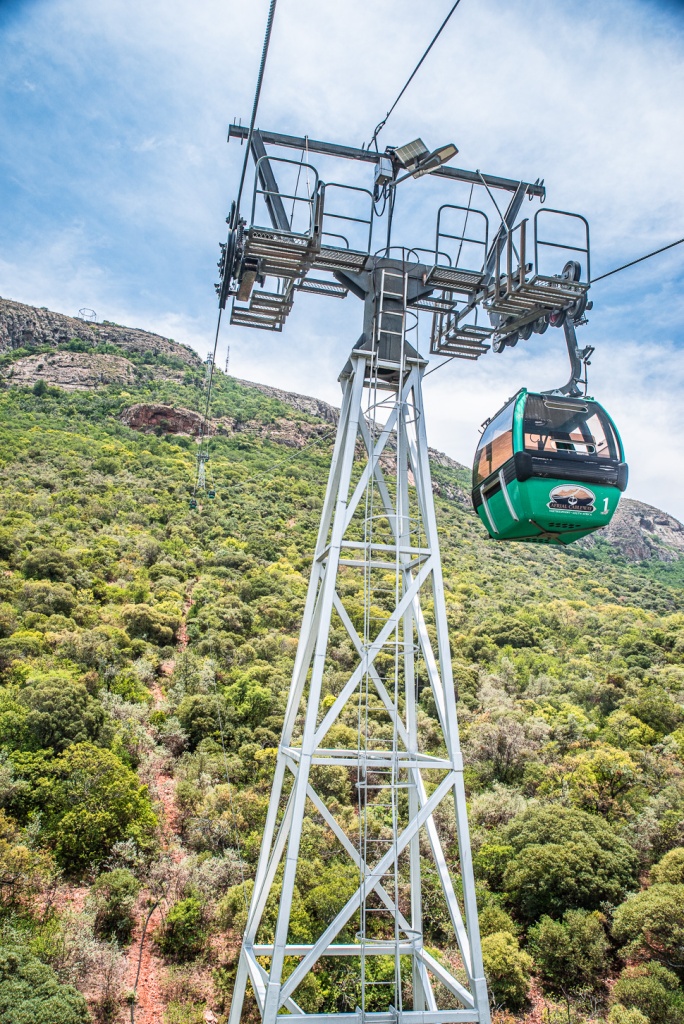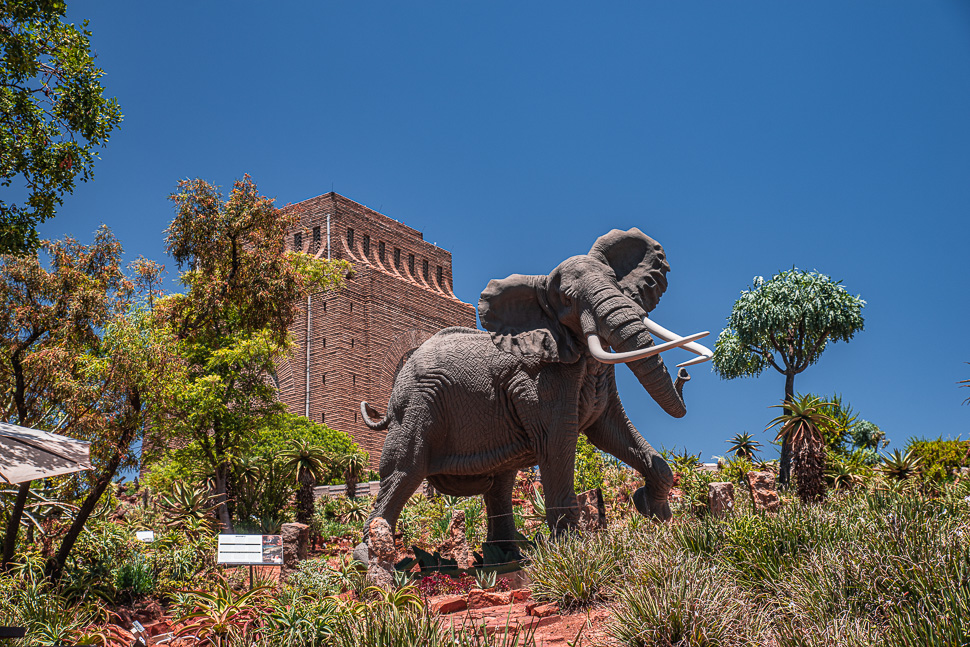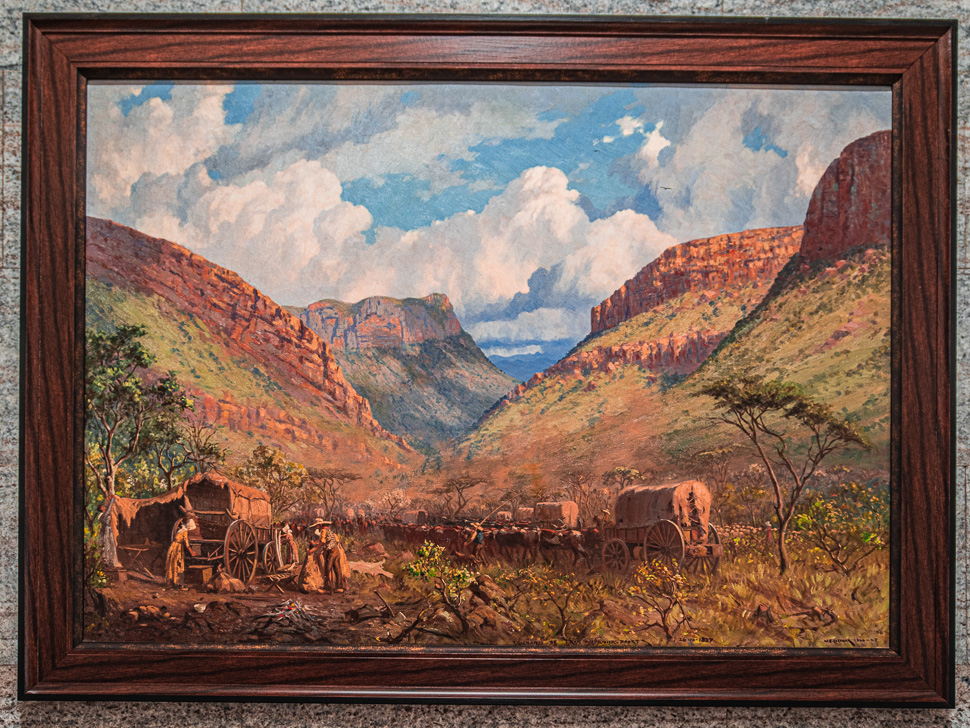
On our way to Pretoria we made a couple of stops to give our engine a brake. One was at Nan Hua Temple, the second biggest Buddhist temple in the world! It was just outside of Pretoria and a big complex with 3 shrines with different Buddha statues.




The 3 brown Buddhas in the main temple are made of African wood, which was carved in Taiwan and brought back here.


We finally reached our favourite camping spot near Pretoria at the Roodeplaat Dam. We had hired a little car for the next days, so we could drive around while our camper was waiting for its heart operation. (At least that’s what it felt like for us)
Besides of taking our washing to the laundry and doing some shopping, we also had the time for some excursions.

One of our trips took us to the Tswaing Crater, an impact crater of 1 km in diameter, caused by a meteorite 220,000 years ago. There is a circular hike up to the crater and down to the lake.





Sadly we had missed the main flowering time of the Jacaranda trees, Pretoria is so famous for. When we had been here the first time, it had just started, now it was over.


Another excursion took us to Hartebeespoort, where we rode the cableway up the Magaliesberg mountains, a well-defined mountain range with great views over the dam.




Another excursion took us to the Voortrekker Monument, a huge building on a hilltop overlooking the town, built to commemorate the Voortrekkers who left the Cape Colony between 1835 and 1854 to find new settling grounds further north-east.


The Voortrekker Monument is 40 metres high, with a base of 40 metres by 40 metres. At the foot of the monument stands Anton van Wouw’s bronze sculpture of a Voortrekker woman and her two children, paying homage to the strength and courage of the Voortrekker women.
On both sides of this sculpture black wildebeest are chiselled into the walls of the monument, a symbol for the dangers of Africa.
Inside it is decorated with a marble frieze, depicting the history of the Great Trek, but incorporating references to every day life, work methods and religious beliefs of the Voortrekkers.

There are exhibitions of art and Voortrekker relicts on the 2 levels down from the ground floor. But first we went up a long spiral staircase to get a view from the dome, very high and a little scary to look down.


The cenotaph is the symbolic tomb of Piet Retief and his delegation, situated in the Cenotaph Hall, as the central focus of the monument.

Through a hole in the dome a ray of sunlight will shines at twelve o’clock on December 16th (the day of the Battle of Blood River) onto the centre of the Cenotaph, striking the words ‘Ons vir Jou, Suid-Afrika’ (Afrikaans for ‘We’re for you, South Africa’).


There is a lot of symbolism in this building, which shares architectural resemblance with European monuments such as the Völkerschlachtdenkmal in Leipzig / Germany.
Outside, there is a beautiful garden like a map of South Africa with all the trek routes, rivers and important places of the Great Trek. Walking through the garden, you can follow the treks.
Afterwards, we rewared us with a visit to a weekend market, with many stalls, different kinds of food and music, a great way to enjoy the rest of the day.
If the change of the turbocharger goes well, we will soon leave Pretoria in direction of Mozambique – more soon!
